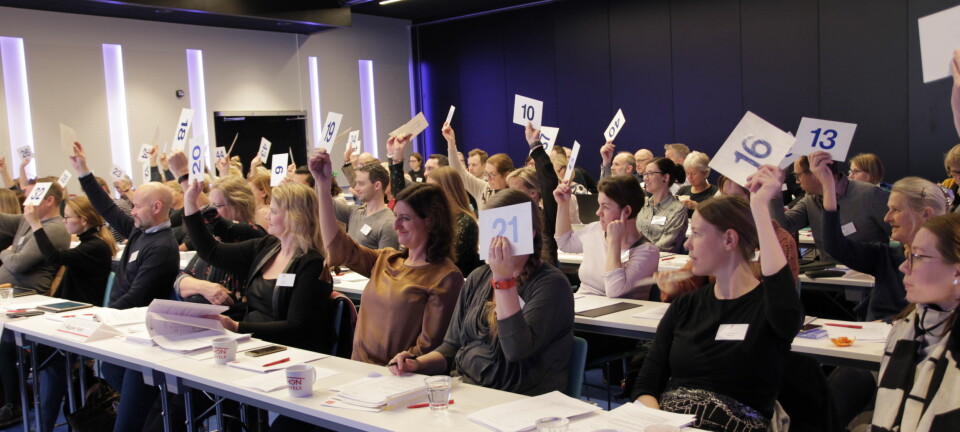Long-term aerobic exercise maintains peak VO2, improves quality of life, and reduces hospitalisations and mortality in patients with heart failure
Blikk på forskning i Fysioterapeuten 7/2013
Blikk på forskning utarbeides i samarbeid med Journal of Physiotherapy (Australia), som trykker forskningspresentasjonene under betegnelsen Critically appraised Papers, CAPs.
Synopsis
Summary of: Belardinelli R, et al (2012) 10-year exercise training in chronic heart failure. J Am Coll Cardiol 60: 1521–1528. [Prepared by Nora Shields, CAP Editor.]
Question: Does aerobic exercise improve peak VO2, quality of life, all-cause mortality, and cardiovascular morbidity in patients with chronic heart failure with mild to moderate symptoms?
Design: Randomised, controlled trial with blinded outcome assessment.
Setting: Hospital and community settings in Italy.
Participants: Patients with chronic heart failure who were clinically stable, had a left ventricular ejection fraction < 40%, and the ability to exercise. Haemodynamically significant valvular heart disease, uncontrolled diabetes or hypertension, and renal insufficiency were exclusion criteria. One hundred and thirty-five patients enrolled in the study and 123 completed the protocol. Randomisation of 123 participants (78% male) allotted 63 to the exercise group and 60 to a usual care group.
Interventions: Both groups received counselling on smoking cessation, stress reduction and diet. In addition, the intervention group participated in an exercise training program for 10 years. The program consisted of 3 × 1-hour sessions per week of aerobic exercise at 60% peak VO2 at a hospital for 2 months under the supervision of a cardiologist and an exercise therapist, and 2 supervised 1-hour sessions at 70% peak VO2 the rest of the year in a community setting. Patients were also encouraged to exercise at home at least once a week. Each exercise session included 40 minutes of aerobic activity (cycling and treadmill). The control group received usual care and were advised to continue their usual physical activities for no longer than 30 minutes each session.
Outcome measures: The primary outcomes were functional capacity, measured by peak VO2 as a percentage of predicted maximum VO2, and quality of life over 10 years. Quality of life was measured using the 21-item Minnesota living with heart failure questionnaire (maximum score 105 points). Secondary outcomes were hospitalisations and cardiac mortality.
Results: At 10-years, the exercise group had maintained a higher peak VO2 as a percentage of predicted maximum VO2 compared with the control group (mean difference 13%, 95% CI 11 to 15). Quality of life was significantly better in the exercise group than the control group at 12 months (by 15 points (95% CI 10 to 20) and this was sustained throughout the 10 year study period. The groups differed significantly on the relative risk (hazard ratios) of hospital readmission (0.6, 95% CI 0.3 to 0.8) and cardiac death (0.6, 95% CI 0.3 to 0.8) in favour of the exercise training group.
Conclusion: Moderate intensity supervised aerobic exercise for patients with chronic heart failure performed at least twice-weekly for 10 years maintains functional capacity at more than 60% predicted maximum VO2. It also offers a sustained improvement in quality of life and a reduction in hospitalisations and cardiac mortality.
[95% CIs calculated by the CAP Editor.]
Commentary
Chronic heart failure (CHF) is a major public health problem with high mortality rates, and the number of hospitalisations for CHF has tripled over the past 30 years (Fida and Pina 2012). CHF is also very costly; in the USA it is the most frequent diagnosis on 30 day readmissions at a cost exceeding 18 billion dollars (Fida and Pina 2012). Thus, interventions aimed at reducing morbidity and mortality in this population of patients are a high priority. The study by Belardinelli et al shows that exercise training may be a very effective intervention, improving functional capacity, quality of life, mortality, and re-hospitalisation rate over a 10 year period.
A very striking result was the improvement in VO2 peak which was maintained above 16 ml/kg/min over the 10 year period. This level of cardiorespiratory fitness is associated with improved survival in CHF patients (Myers et al 2002). Interestingly, ejection fraction also improved five years after initiation of the program. Thus, long term, supervised exercise training improved two important prognostic markers as well as mortality and morbidity. However, given the relatively small number of patients in the study, these outcome data need to be viewed with caution. The practicality of these findings could be questioned.
Clearly, a 10-year medically supervised cardiac rehabilitation program is not feasible or cost effective in most clinical settings. However, considering the relative safety of exercise training, professionally supervised group based exercise training programs conducted in a health club setting as applied in the Belardinelli et al study is a potential avenue that deserves further consideration. It should also be recognized that these findings apply only to CHF with reduced ejection fraction, and it is still unknown if exercise has a positive impact on CHF patients with normal ejection fraction. Finally, given the small number of women in the study, it is unclear if these findings apply equally to men and women.
Bo Fernhall, College of Applied Health Sciences, University of Illinois at Chicago, USA
References
Fida N, Pina IL (2012) Curr Heart Fail Rep 9: 346–353.
Myers J et al (2002) N Engl J Med 346: 793–801.





















